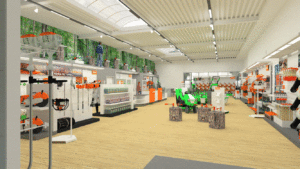Quickly becoming one of the most sought after skills, 3D knowledge is a must for designers.
“3D modeling is the new frontier of graphic design.” Where 3D was once used mostly for preview purposes, it is now a growing design trend, with the creative industry paying much more attention to this exciting medium. Innovative brands have realized the power of 3D, using it to create surprising and vibrant geometric compositions in their most recent advertising campaigns. And, since the capabilities of 3D are also being fully realized with augmented and virtual reality.
While the jump into the extra dimension may seem a bit daunting for those currently working only in 2D, the introduction of various 3D tools and training for graphic designers in recent years has made mastering the art of 3D much easier. what it seems like.
Investing a little time mastering this new ability could be a very lucrative move, and there’s no better time to start.
Are you already designing in 3D? If not, here’s a list of reasons why you probably should be.
Everyone will love you.
If you’re wondering if the move to 3D is really worth it, trust us when we say the answer is unequivocally yes. Aside from the obvious benefits of developing your creative skill set, 3D is the foundational skill for motion design, virtual and augmented reality, 3D printing, visual effects and more, which means you’ll be able to tap into a foundation of brand new customers. With innovative brands already exploring the 3D space, this additional skill set will also make you much more marketable than creatives working solely in 2D.
2D images will always be crucial to the creative process, however it is not always easy to imagine the final shape of a 3D object with a 2D image, especially when dealing with complex geometry. By creating a very basic 3D model, unexpected or undesirable results can be detected and addressed very quickly at the early concept stage, allowing for greater control and precision over your designs.
Revive your mind
Why not combine 2D and 3D techniques to help shake things up a bit, or add some 3D renderings to a 2D sketch to give it an element of realism? You could even use a 3D model to inform dimensions, perspectives, and shading in a 2D illustration.
If nothing else, there’s a lot of fun to be had in 3D space. Even if you never plan to use the designs you create, it will certainly help to set off the creative sparks.



